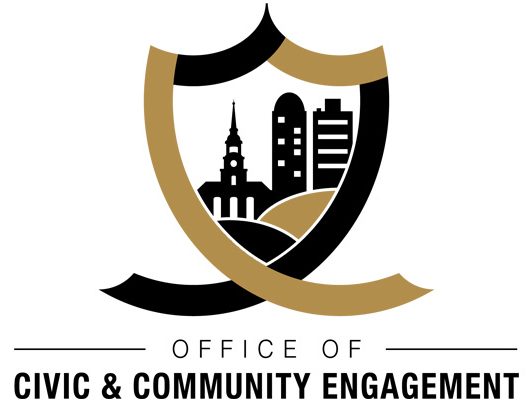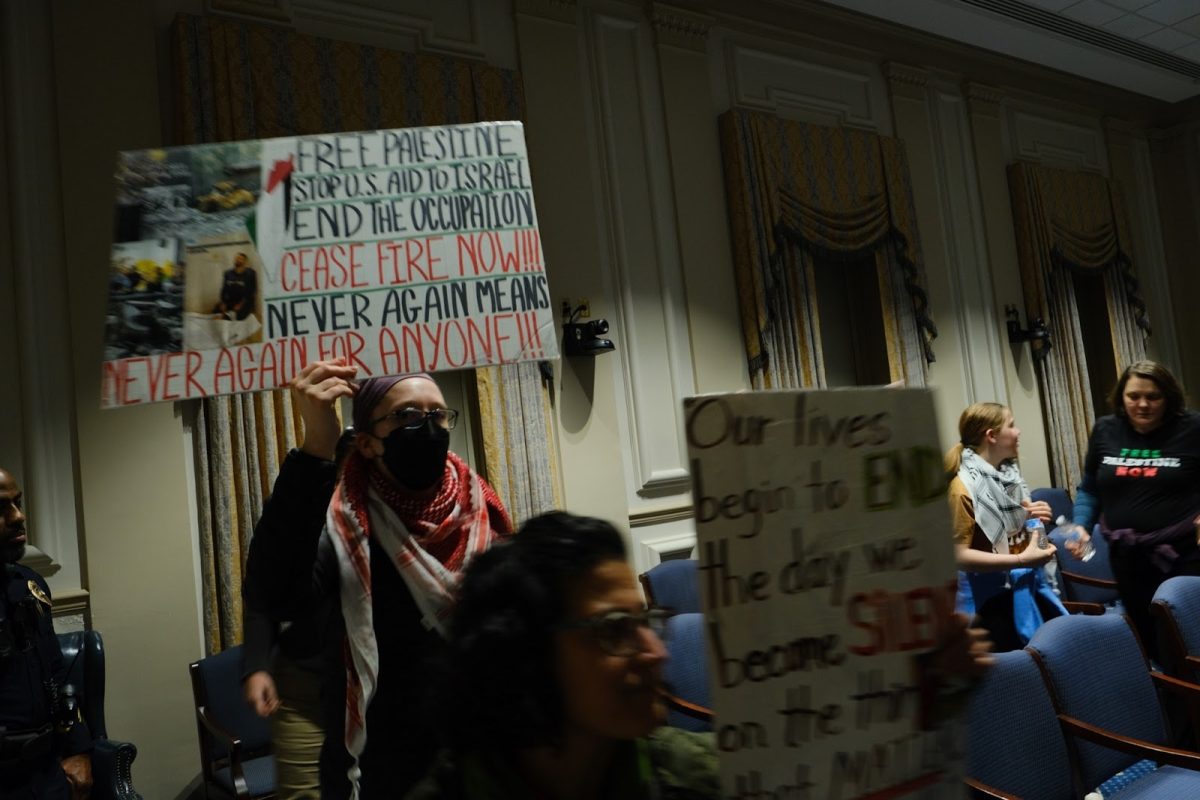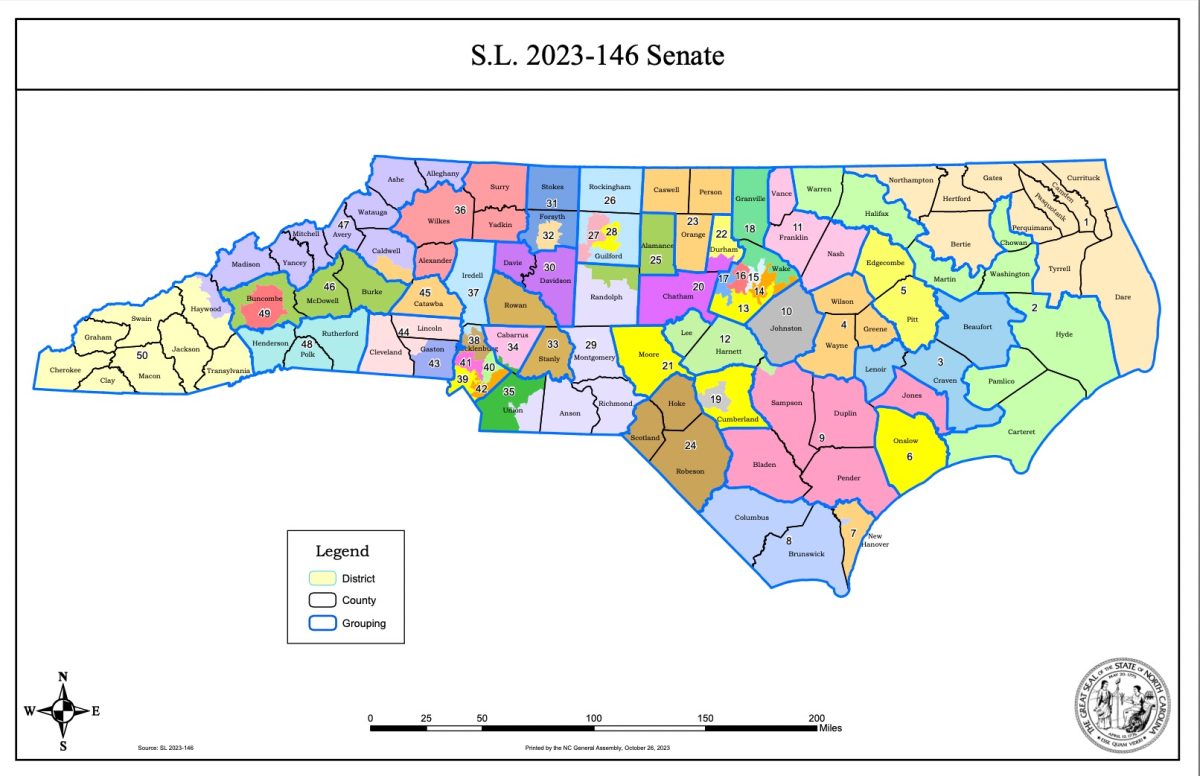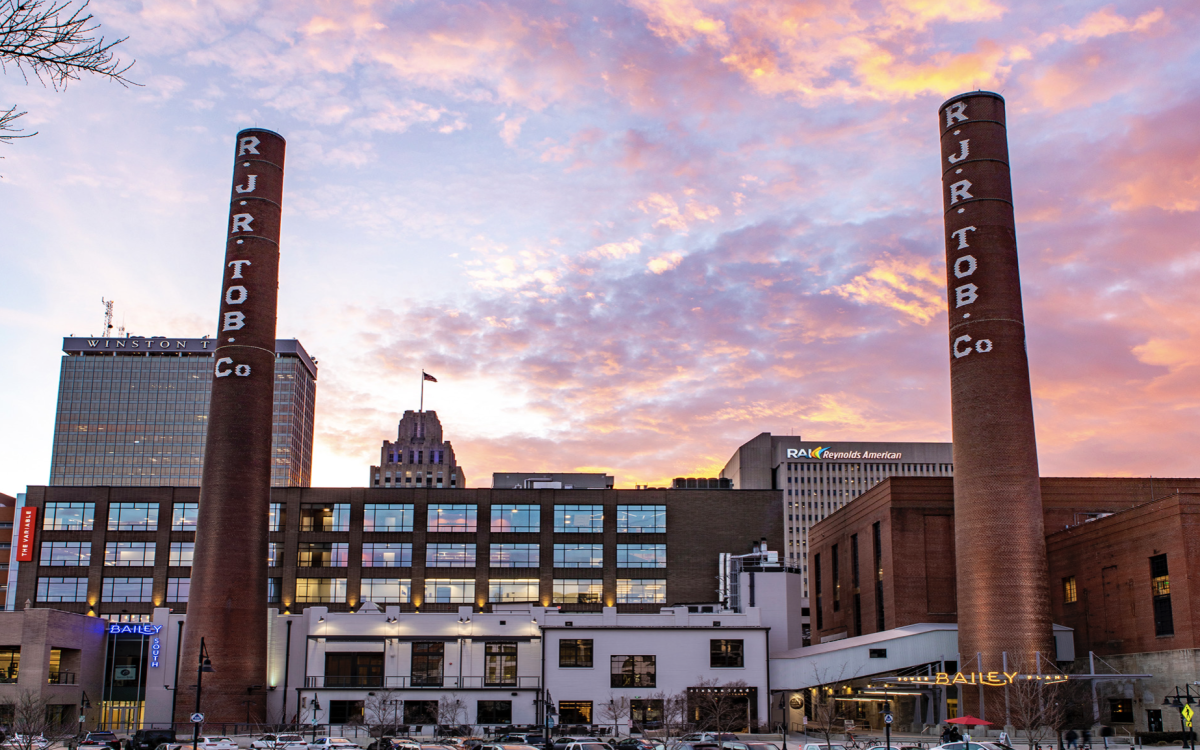The last time Lindsay Comstock-Ferguson was in Innovation Quarter’s Building 60, construction workers were adding drywall and wiring.
Fast-forward two months to the final weeks of the fall semester, and she is now moving into the building in less than a month to teach a biochemistry lab on Monday afternoons.
Comstock-Ferguson is an associate professor in the chemistry department. She will finally see the finished products of many of her department’s ideas for new lab designs for Wake Downtown, the monumental move that will relocate 18 courses from nine departments to the Wake Forest Innovation Quarter.
275 students are currently enrolled in classes that will be offered downtown in the spring in Building 60, the repurposed manufacturing building once owned and operated by R.J. Reynolds Tobacco Company.
The lab will use entirely new equipment, from the most basic pipette tools to more complex instrumentation.
Comstock-Ferguson said she looks forward to pre-med and pre-health track students opening their eyes to another part of Winston-Salem.
She looks forward to seeing undergraduates learn from medical school faculty, who will be next to Wake Forest students geographically and in the classroom, as Wake Downtown and the medical school both occupy Building 60.
“New technology is going to lead to new ways of teaching,” she said. “It will open students’ eyes to opportunities downtown they might not have seen before. Students should be excited to be a part of the future for Wake Forest.”
“I’m assuming I’ll have to be flexible in the first few weeks and maybe start lab 10-15 minutes late,” she said. “We just have to all be flexible as we figure it out in January, which is the big obstacle.”
Sherlock Holmes mysteries await first seminar downtown
Elsewhere in Building 60, first year seminar students will examine tobacco samples, an activity quite fitting for a remodeled tobacco factory.
This spring, Bradley Jones, dean of graduate programs in arts and sciences and undergraduate professor, will join the other non-premed classes by teaching his 20th semester of his first year seminar downtown.
Rebecca Alexander, director of academic planning for Wake Downtown, spoke with Jones about the possibility of teaching his course in the new space when the idea was still in its beginning stages, and Jones immediately began to draw parallels between his curriculum and the scientific work being done by the Wake Downtown community.
As one of the first faculty members to pioneer the first year seminar program, Jones jumped at the opportunity for change and innovation. He is a lover of mystery and chemistry, a passion reflected in the life of the beloved Sherlock Holmes as told by Arthur Conan Doyle’s short stories and novelettes, the primary focus of the seminar titled “Analytical Methods of Sherlock Holmes.”
“Holmes’s interests were vegetable alkaloids like cocaine, morphine and caffeine, which are ultimately the root of medicine,” Jones said. “He’s a natural for Innovation Quarter. He isn’t as much an academic, but is more interested in using what he knows, which is what Innovation Quarter is.”
The class will reflect on how Sherlock Holmes went about solving problems with science as told through the romanticized lense of Arthur Conan Doyle. The students will have multiple opportunities to explore downtown as a result of the new location, including a potential screening of a movie at Aperture, the independent art cinema on 4th Street.
The seminar was also strategically timed offered from 5-6:15 p.m. by Jones so that students will have the opportunity explore dinner options downtown after class, or even participate in a murder mystery dinner as a class one night.
The transition for Jones was mentally challenging at times, with freshmen taking longer than usual to fill the 16 seats available.
“There are definitely growing pains,” Jones said. “Usually my first year seminar is filled during the first round of registration. I think the fact that it’s downtown might hold students back. It’s only a couple miles away, but it’s a quantum leap mentally.”
Creativity in innovation
Jan Detter, visiting assistant professor of practice, will offer undergraduate entrepreneurship students the opportunity to take creativity and innovation in the heart of downtown’s hub for modernization. She has been teaching the class for 10 years in a traditional academic environment, but not in a traditional style.
“One of the best ways my students learn is from putting case studies about real human creative people in front of them and educating them on what it looks like to be creative in variety of fields,” Detter said.
“In my class I introduce the idea that creativity is a way of being in world with an endlessly open mind to solving problems,” she added. “It isn’t always painting paintings or composing music, it’s anything that is helpful, novel and useful.”
Her class filled during the first two days of registration, and the waitlist reached capacity soon afterward.
“I’ve probably received 50 email inquiries trying to get in my class,” Detter said. “Six or seven a day. There’s a lot of curiosity about Innovation Quarter. My biggest concern was that students wouldn’t want to leave campus to go downtown. I was nervous about the transportation factor, but I thought it was worth the risk in the end.”
Detter moved to the heart of downtown when her daughter was 13 and lived there for 10 years.
“My daughter grew incredibly and learned to be independent,” she said. “She navigated on her bike or walked to local businesses, restaurants and galleries downtown. It’s one of the reasons I’m thrilled to be moving to Innovation Quarter; it seemed very natural to me.”
Detter said she is ready for her students to learn the key lesson of community literacy.
“Many students who have lived in sheltered situations at home then come here and never leave campus aren’t as prepared to jump into a big city for their first job,” she said. “I hope they realize downtown isn’t more dangerous, just different. I think they’ll thrive.”
Spreading the word
Students such as junior chemistry major Bobby Grady have largely been unaware of the planning and offerings of Wake Downtown. Many students like Grady are excited about the possibilities for scientifically-minded students, such as working alongside medical school faculty. However, many of these students have been largely unaware of the planning and offerings of Wake Downtown.
“I don’t understand how the classes are going to be different,” Grady said. “I would assume they’ll be smaller. I would assume the labs will be more updated and nicer, but I don’t even know what’s out there right now.”
At 5 p.m. on Nov. 29, faculty invited the student body to a Wake Downtown information session in ZSR auditorium to combat the confusion surrounding Innovation Quarter.
Rebecca Alexander began the session with an overview of Innovation Quarter and the transformation of Building 60 itself, sharing before and after photos and the move by the numbers.
She spoke of the new degree offerings for chemistry and biology and tackled the buzzing topic of the engineering program. She smiled as she informed the crowded room that the building had just received its temporary certificate of occupancy, and that all was set in motion for move-in day on Jan. 2, 2017.
Emily Neese, associate vice president for strategy and operations, spoke next, addressing nitty gritty details. She shared that shuttles will run outside Benson from Monday to Friday from 8 a.m.-11 p.m. and 10 a.m.- 6 p.m. on the weekends, with very limited parking options.
She walked the students through safety procedures, including the fact that all Wake Forest students and faculty will be required to display their DeaconOne cards in wearable badge holders while in the building for security measures.
The student questions that quickly followed mainly addressed parking, the shuttles and the possibility of Wake Forest purchasing apartments in Innovation Quarter’s new residential and retail complex due for completion in 18 months. Would Wake Forest buy a block of rooms to become part of inventory for ‘on-campus’ housing?
“It’s a wait and see,” Neese said.
Her response summed up what has been a semester full of anticipation for Wake Forest’s monumental move to Innovation Quarter; a semester of asking questions, tackling logistics and logging hours upon hours of planning and construction.
It’s a wait and see.



















